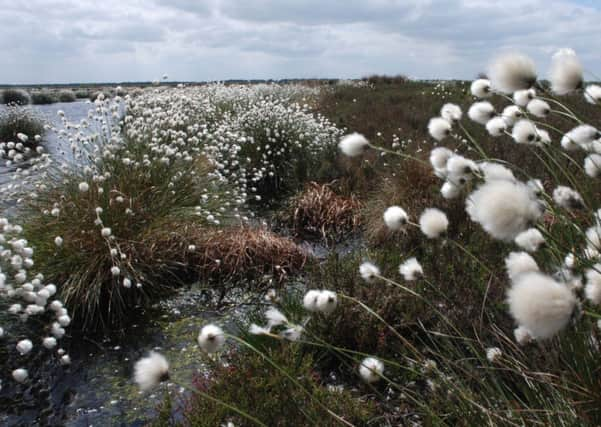Moors return to natural habitats


Guest speaker was Janet Canning, a reserve manager with Humberside Peatlands, which covers Thorne, Hatfield and Crowle moors. She illustrated her talk with screened photographs.
The moors are now run and owned by Natural England and have national and international status as a national nature reserve.
Advertisement
Hide AdAdvertisement
Hide AdMs Canning, who lives in Epworth’s Wheatfield Close, explained to 20-plus society members who were present that the history of the moors goes back some 15,000 years, when there was an ice age.
“Then about 5,000 years ago the ice receded, causing sea levels to rise and low land – including the moors – was flooded.
“Prior to the flood almost the whole of the UK was covered with trees and even today we can find the petrified remains of trees on the moors,” she said.
Ms Canning explained that people had, for years, been hand-cutting peat from the moors for use as fuel but it was not until the 1960s that this started on an industrial scale to provide gardeners with multi-purpose feed for their plants and also for gardening grow-bags.
Advertisement
Hide AdAdvertisement
Hide AdIt was not until 2001 that the first restoration work started on Thorne Moor and the others were quick to follow suit.
Work is continuing with volunteers to help restore the moors to their natural habitat.
Ms Canning said that large areas of the moors have been returned to producing sphagnum moss and cotton grass, which are indigenous plants. She said that there were herds of red and roe deer, reptiles such as adders and grass snakes and common lizards as well as a vast variety of insects and fungi.
Birds now found on the moors include various geese, woodpeckers, oyster catchers, barn owls and nightjars, which winter in Africa and return each year to nest.
Advertisement
Hide AdAdvertisement
Hide AdMs Canning said that the moors are open with organised walks for schoolchildren and adults. They have facilities for the disabled and viewing platforms.
She concluded by reminding her audience that a Neolithic wooden causeway was found on Hatfield Moors in 2004. It runs for some 45 metres from Lindholm Island to a raised area on the moors.
“Why it was built, and its significance to the people who undertook the task of building it, is still unknown,” she said.
The Men’s Society meets monthly throughout the winter season.
Advertisement
Hide AdAdvertisement
Hide AdIncluded in its forthcoming programme of events are an indoor games night, a quiz and a visit to Doncaster Air Museum.
Further information about the society and its events is available from Ken Bickerstaff on 01427 872288.
●Anyone wanting further information about the Humberhead Peatlands is asked to call 01652 675053 or alternatively visit www.visitnorthlincolnshire.com website, where there is a wealth of information available.